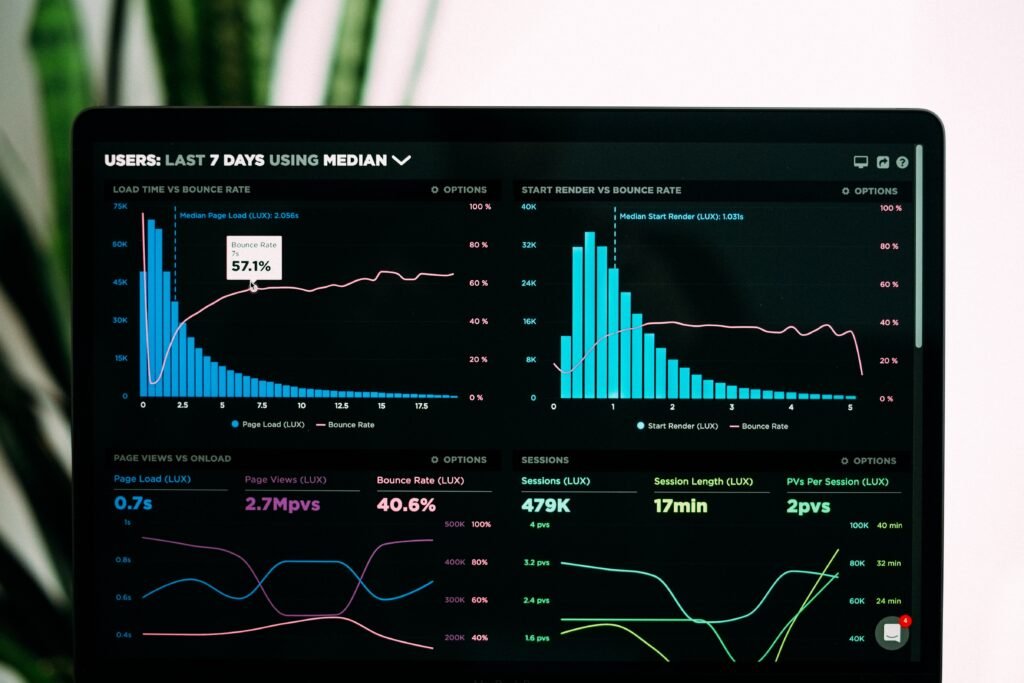A Deep Dive into Zero-Party Data and First-Party Data: What Marketers Need to Know
Are you a marketer looking to gain a better understanding of data and how it can enhance your strategies? Look no further! In this article, we will delve deep into the world of zero-party data and first-party data, two essential concepts that every marketer should be familiar with.
Zero-party data refers to the information that customers willingly and proactively share with businesses. Unlike third-party data, which is purchased from external sources, zero-party data is willingly offered by consumers through surveys, preference centers, and other direct interactions. On the other hand, first-party data includes the information that businesses collect directly from their audience through various touchpoints, such as website visits, newsletter sign-ups, and purchase histories.
Understanding the nuances and implications of both zero-party data and first-party data is crucial for marketers. By leveraging these valuable insights, businesses can gain a deeper understanding of their customers’ preferences, behaviors, and motivations, enabling them to create personalized and targeted marketing campaigns that truly resonate.
Join us as we explore the benefits, challenges, and best practices associated with zero-party data and first-party data, and discover how these valuable assets can revolutionize your marketing efforts.
Understanding the differences between zero-party data and first-party data
Zero-party data refers to the information that customers willingly and proactively share with businesses. Unlike third-party data, which is purchased from external sources, zero-party data is willingly offered by consumers through surveys, preference centers, and other direct interactions. This type of data provides marketers with valuable insights into customers’ preferences, interests, and motivations, allowing for more personalized marketing efforts.
On the other hand, first-party data includes the information that businesses collect directly from their audience through various touchpoints, such as website visits, newsletter sign-ups, and purchase histories. This data is owned and controlled by the business and provides a deep understanding of customer behavior and engagement with the brand. By analyzing first-party data, marketers can uncover patterns, identify trends, and make data-driven decisions to optimize their marketing strategies.
Understanding the nuances and implications of both zero-party data and first-party data is crucial for marketers. By leveraging these valuable insights, businesses can gain a deeper understanding of their customers’ preferences, behaviors, and motivations, enabling them to create personalized and targeted marketing campaigns that truly resonate.
The importance of zero-party data and first-party data in marketing

In today’s highly competitive business landscape, data has become the lifeblood of marketing. Zero-party data and first-party data play a vital role in helping marketers understand their customers and deliver more relevant and personalized experiences. These types of data provide rich insights that can fuel customer segmentation, content personalization, and campaign optimization.
Zero-party data allows marketers to go beyond surface-level demographics and gain a deeper understanding of their customers’ needs and desires. By directly asking customers for their preferences, interests, and motivations, businesses can create highly targeted campaigns and experiences that speak directly to their audience. This data empowers marketers to build stronger relationships with their customers, increase customer loyalty, and drive higher conversion rates.
Similarly, first-party data provides businesses with invaluable insights into customer behavior and engagement. By tracking and analyzing data from various touchpoints, marketers can identify patterns and trends, uncovering valuable information about customer preferences, purchase history, and browsing behavior. Armed with this knowledge, businesses can create personalized marketing strategies that resonate with their audience, resulting in improved customer experiences and increased customer lifetime value.
Collecting zero-party data: Strategies and best practices
Collecting zero-party data requires a proactive approach that encourages customers to willingly share their information. Here are some strategies and best practices to consider:
- Interactive Surveys: Conducting interactive surveys is an effective way to collect zero-party data. By creating engaging surveys that capture customers’ preferences, interests, and motivations, businesses can gather valuable insights that can inform their marketing strategies.
- Preference Centers: Implementing preference centers on your website or app allows customers to customize their experience and share their preferences. By giving customers control over the information they provide, businesses can gather zero-party data that is accurate and relevant.
- Incentives and Rewards: Offering incentives or rewards in exchange for zero-party data can encourage customers to share their information willingly. This could include exclusive discounts, personalized recommendations, or access to special content.
Remember, transparency and trust are crucial when collecting zero-party data. Clearly communicate the value customers will receive by sharing their information and ensure their data is handled securely and ethically.
Collecting first-party data: Strategies and best practices
Collecting first-party data is an ongoing process that requires businesses to track and analyze customer interactions across various touchpoints. Here are some strategies and best practices to consider:
- Website Tracking: Implementing web analytics tools allows businesses to collect data on website visitors, including their browsing behavior, time spent on site, and pages visited. This data provides valuable insights into customer interests and preferences.
- Newsletter Sign-ups: Encouraging visitors to sign up for newsletters or email subscriptions is an effective way to collect first-party data. By capturing email addresses and other relevant information, businesses can nurture leads and deliver targeted content.
- Purchase History: Tracking customer purchase history provides businesses with valuable insights into individual buying behavior and preferences. By analyzing this data, marketers can create personalized recommendations and targeted offers to drive repeat purchases.
It’s important to ensure compliance with data protection regulations, such as GDPR and CCPA, when collecting and storing first-party data. Obtain proper consent from customers and implement robust security measures to protect their data.
Leveraging zero-party data and first-party data for personalized marketing

The combination of zero-party data and first-party data empowers marketers to deliver highly personalized marketing campaigns and experiences. By leveraging these data types, businesses can:
- Segmentation: Zero-party data and first-party data enable businesses to segment their audience based on preferences, behaviors, and demographics. This allows for more targeted messaging and tailored experiences that resonate with specific customer segments.
- Content Personalization: With access to customer preferences and interests, marketers can create personalized content that engages and resonates with their audience. From personalized product recommendations to customized email newsletters, leveraging zero-party and first-party data allows businesses to deliver content that is highly relevant and valuable to individual customers.
- Campaign Optimization: Analyzing zero-party data and first-party data can provide insights into campaign performance, allowing marketers to optimize their strategies. By understanding which campaigns resonate with specific customer segments, businesses can allocate resources effectively and drive better results.
Examples of successful zero-party data and first-party data campaigns

To illustrate the power of zero-party data and first-party data, let’s explore a couple of successful campaigns:
Yelp: Zero-party data is a type of data that can help companies personalize their services more effectively without risking crossing a line with customers. This is because customers provide this data voluntarily and only share the information they feel comfortable sharing. For instance, Yelp’s app allows customers to create a preference center where they can specify dietary, lifestyle, and accessibility preferences, among others. To provide personalized recommendations, Yelp uses zero-party data to highlight restaurants’ attributes that align with customer preferences. This way, customers can make informed decisions based on their personal preferences.
- E-commerce Black Scottie Chai: E-commerce Black Scottie Chai leveraged first-party data by tracking customer browsing behavior and purchase history. Using this data, they created tailored email campaigns that showcased products related to customers’ previous purchases. This personalized approach resulted in a higher click-through rate and increased conversion rates.
These examples demonstrate the power of zero-party data and first-party data in driving customer engagement and delivering personalized experiences that resonate with individuals.
Challenges and limitations of zero-party data and first-party data
While zero-party data and first-party data offer numerous benefits, it’s essential to be aware of their challenges and limitations:
- Data Quality: Zero-party data and first-party data rely on customers willingly sharing accurate information. However, there is a risk of incomplete or inaccurate data, as customers may provide inconsistent or false information.
- Data Privacy: Collecting and storing customer data comes with the responsibility to prioritize data privacy and security. Businesses must comply with applicable regulations and ensure proper safeguards are in place to protect customer data from unauthorized access or breaches.
- Scale and Reach: Zero-party data and first-party data are limited to the customer base of a particular business. While valuable for personalized marketing efforts, they may not provide a comprehensive view of the overall market or target audience.
- Data Analysis and Insights: Analyzing and making sense of large volumes of zero-party data and first-party data can be challenging. Businesses must invest in the right tools and expertise to extract meaningful insights and optimize their marketing strategies effectively.
Although 92% of marketers believe that understanding first-party data is critical to business growth, many brands still struggle with collecting and utilizing it effectively.
Implementing zero-party data and first-party data in your marketing strategy
To successfully implement zero-party data and first-party data in your marketing strategy, consider the following steps:
- Define Your Goals: Clearly define your marketing objectives and identify how zero-party data and first-party data can help you achieve those goals. Whether it’s improving customer satisfaction, increasing conversions, or driving repeat purchases, align your data collection efforts with your desired outcomes.
- Choose the Right Tools: Invest in tools and technologies that enable you to collect, store, and analyze zero-party data and first-party data effectively. CRM systems, marketing automation platforms, and analytics tools can provide the infrastructure needed to leverage these data types.
- Data Governance and Compliance: Establish clear policies and procedures for data governance and compliance. Ensure that you obtain proper consent from customers, handle data securely, and comply with relevant data protection regulations.
- Integrate Data Sources: Integrate your zero-party data and first-party data with other relevant data sources, such as third-party data or social media data, to gain a more comprehensive view of your customers. This integration can provide deeper insights and allow for more sophisticated targeting and personalization.
- Continuous Analysis and Optimization: Regularly analyze your zero-party data and first-party data to uncover trends, patterns, and opportunities for optimization. Use this information to refine your marketing strategies, personalize your campaigns, and drive better results.
Conclusion: The future of zero-party data and first-party data in marketing

Zero-party data and first-party data have become essential assets for marketers in today’s data-driven world. By understanding the differences, benefits, and best practices associated with these data types, businesses can unlock valuable insights that drive personalized marketing strategies and deliver exceptional customer experiences.
As data privacy regulations evolve and consumer expectations shift, the importance of zero-party data and first-party data will only continue to grow. Marketers who embrace these concepts and leverage them effectively will gain a competitive advantage, forging stronger connections with their customers and driving business growth.
Remember, data is at the heart of successful marketing. Embrace the power of zero-party data and first-party data, and watch your marketing efforts thrive!
FAQs
- What is Zero-Party Data?
- Zero-party data vs. first-party data: What’s the difference?
- What is zero and first-party data?
- What are zero-party data types?
- What is first-party data vs zero-party data?
Do You Have Questions?
If you’re looking for reliable Digital Marketing solutions in the market, you might as well take a look at Quarata Consulting. QC (Quarata Consulting) is an expert digital marketing company that provides the best PPC, SEO, SMM (Social Media Marketing), and Email Marketing services.
Call us at (719) 453-4803 or schedule a video call to tell us what you need. If you are in Colorado Springs, the coffee is on us.
We look forward to connecting with you!






 by Quarata Consulting
by Quarata Consulting